
Piombino is an Italian town and comune of about 35,000 inhabitants in the province of Livorno (Tuscany). It lies on the border between the Ligurian Sea and the Tyrrhenian Sea, in front of Elba Island and at the northern side of Maremma.

The Regia Marina or Royal Italian Navy was the navy of the Kingdom of Italy from 1861 to 1946. In 1946, with the birth of the Italian Republic, the Regia Marina changed its name to Marina Militare.
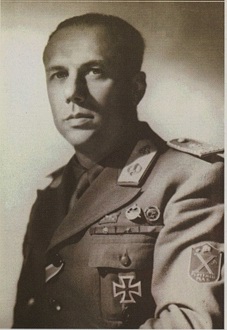
The Decima Flottiglia MAS was an Italian flotilla, with commando frogman unit, of the Regia Marina created during the Fascist regime.

HMS Safari was a third batch S-class submarine built for the Royal Navy during World War II. Commissioned in 1942, she was assigned to operate in the Mediterranean Sea. During the course of the war, Safari sank twenty-five ships, most of which were Italian.

The Battle of Leros was the central event of the Dodecanese campaign of the Second World War, and is widely used as an alternative name for the whole campaign. After the Armistice of Cassibile the Italian garrison on the Greek island Leros was strengthened by British forces on 15 September 1943. The battle began with German air attacks on 26 September, continued with the landings on 12 November, and ended with the capitulation of the Allied forces four days later.
The Torpedoboot Ausland were small destroyers or large torpedo boats captured by Nazi Germany and incorporated into the Kriegsmarine. They were assigned a number beginning with TA.
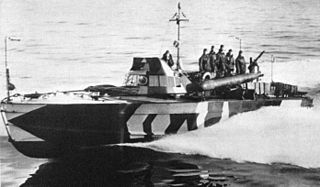
Motoscafo armato silurante, commonly abbreviated as MAS, was a class of fast torpedo-armed vessels used by the Regia Marina during World War I and World War II. Originally, "MAS" referred to motobarca armata SVAN, Società Veneziana Automobili Navali.

The Ciclone class were a group of torpedo boats or destroyer escorts built for the Italian Navy which fought in the Second World War. They were modified, slightly heavier, versions of the previous Orsa class, with improved stability and heavier anti-submarine armament. These ships were built as part of the Italian war mobilization programme and completed in 1942–43.
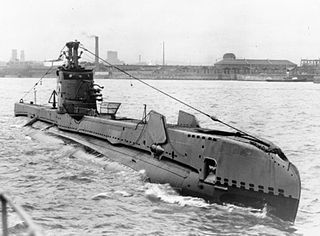
HMS Saracen was a third-batch S-class submarine built for the Royal Navy during the Second World War. Completed in 1942, Saracen conducted a patrol in the North Sea where she sank a German U-boat. She was then assigned to the 10th Submarine Flotilla in Malta, from where she made three patrols; on her second, she sank an Italian submarine. Saracen was then reassigned to the 8th Submarine Flotilla, based in Algiers, French North Africa.

HMS P47 was a Royal Navy U-class submarine built by Vickers-Armstrong. She was transferred to the Royal Netherlands Navy before completion and renamed HNLMS Dolfijn.

Carlo Fecia di Cossato was an officer in the Regia Marina, in command of submarines and torpedo boats during World War II. He was credited with the confirmed sinking of 23 enemy ships. He was also a recipient of the Knight's Cross of the Iron Cross and of the Gold Medal of Military Valor, the highest decoration of the Italian Armed Forces.

The Adriatic campaign of World War II was a minor naval campaign fought during World War II between the Greek, Yugoslavian and Italian navies, the Kriegsmarine, and the Mediterranean squadrons of the United Kingdom, France, and the Yugoslav Partisan naval forces. Considered a somewhat insignificant part of the naval warfare in World War II, it nonetheless saw interesting developments, given the specificity of the Dalmatian coastline.

The invasion of Elba, codenamed Operation Brassard, was part of the Italian campaign during the Second World War. The invasion was carried out from 17 to 19 June 1944 by Free French Forces supported by British and American ships and aircraft. According to the testimony of captured Germans, Allied activity had been observed on Corsica, thus the defenders were aware of the impending invasion 24 hours in advance. They resisted for two days before being given permission to withdraw to the mainland.
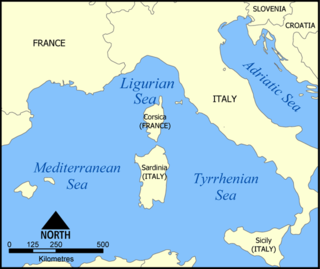
The Italian occupation of Corsica refers to the military occupation by the Kingdom of Italy of the French island of Corsica during the Second World War, from November 1942 to September 1943. After an initial period of increased control over the island, by early spring 1943 the Maquis had begun to occupy the hinterland. In the aftermath of the Armistice of Cassibile, the Italian capitulation to the Allies, some Italian units sided with German troops sent to replace the Italian garrison and some defected to the Maquis and Free French Forces.
The action of 1 November 1944, also known as the Ambush off Pag Island, was a naval engagement in the Kvarner Gulf of the Adriatic Sea, between the islands of Pag and Lussino on 1 November 1944. It was fought between a British Royal Navy destroyer flotilla and a Kriegsmarine force of two corvettes and a destroyer. The German flotilla was deployed to escort a convoy retreating from Šibenik to Fiume. The British managed to destroy all three German ships in return for no loss.
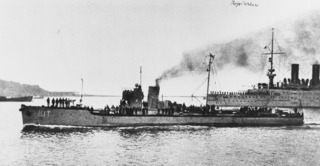
The 250t class were high-seas torpedo boats built for the Austro-Hungarian Navy between 1913 and 1916. A total of 27 boats were built by three shipbuilding companies, with the letter after the boat number indicating the manufacturer. There were small variations between manufacturers, mainly in the steam turbines used, and whether they had one or two funnels. The eight boats of the T-group, designated 74 T – 81 T, were built by Stabilimento Tecnico Triestino, located at Trieste. The sixteen boats of the F-group, 82 F – 97 F, were built by Ganz-Danubius at their shipyards at Fiume and Porto Re. The three M-group boats, 98 M – 100 M, were manufactured by Cantiere Navale Triestino at Monfalcone.

Surface flotillas of the Kriegsmarine were organizational groupings of German naval vessels during World War II based on class of vessel and geographical location. Surface flotillas were not operationally deployed units, but functioned through the administrative command chain of the Kriegsmarine.
SMS V28 was a V25-class torpedo boat of the Imperial German Navy that served during the First World War. The ship was built by AG Vulcan at Stettin in Prussia, and was completed in September 1914. The ship took part in the Battle of Dogger Bank, the Battle of the Gulf of Riga in 1915, and the Battle of Jutland on 31 May 1916.
The German torpedo boat TA37 was an Ariete-class torpedo boat operated by the German Kriegsmarine during the Second World War. The ship was built for the Italian Navy by the shipbuilder CRDA at their Trieste shipyard with the name Gladio in 1943, but was incomplete when Italy surrendered to the Allies in September 1943, and was seized by Nazi Germany. The ship entered service as TA37 in 1944, serving in the Adriatic and Aegean seas and was sunk by British destroyers on 7 October 1944.
The German torpedo boat TA24 was an Ariete-class torpedo boat operated by the German Kriegsmarine during the Second World War. The ship was built for the Italian Navy by the shipbuilder Ansaldo at their Genoa shipyard with the name Arturo in 1943, but was incomplete when Italy surrendered to the Allies in September 1943, and was seized by Nazi Germany. The ship entered service as TA24 in October 1943, serving in the Tyrrhenian Sea and was sunk by British destroyers on 18 March 1945.
















